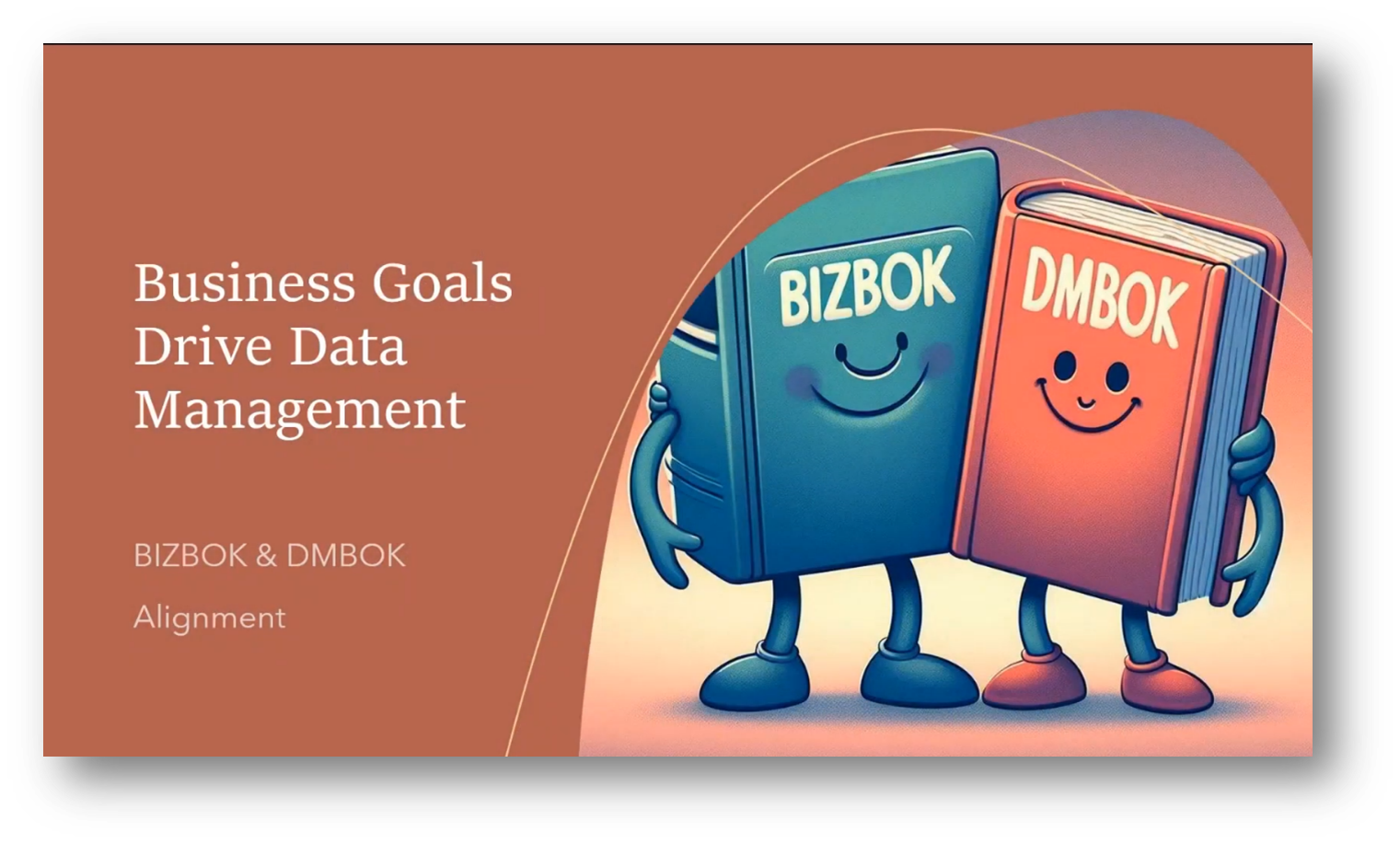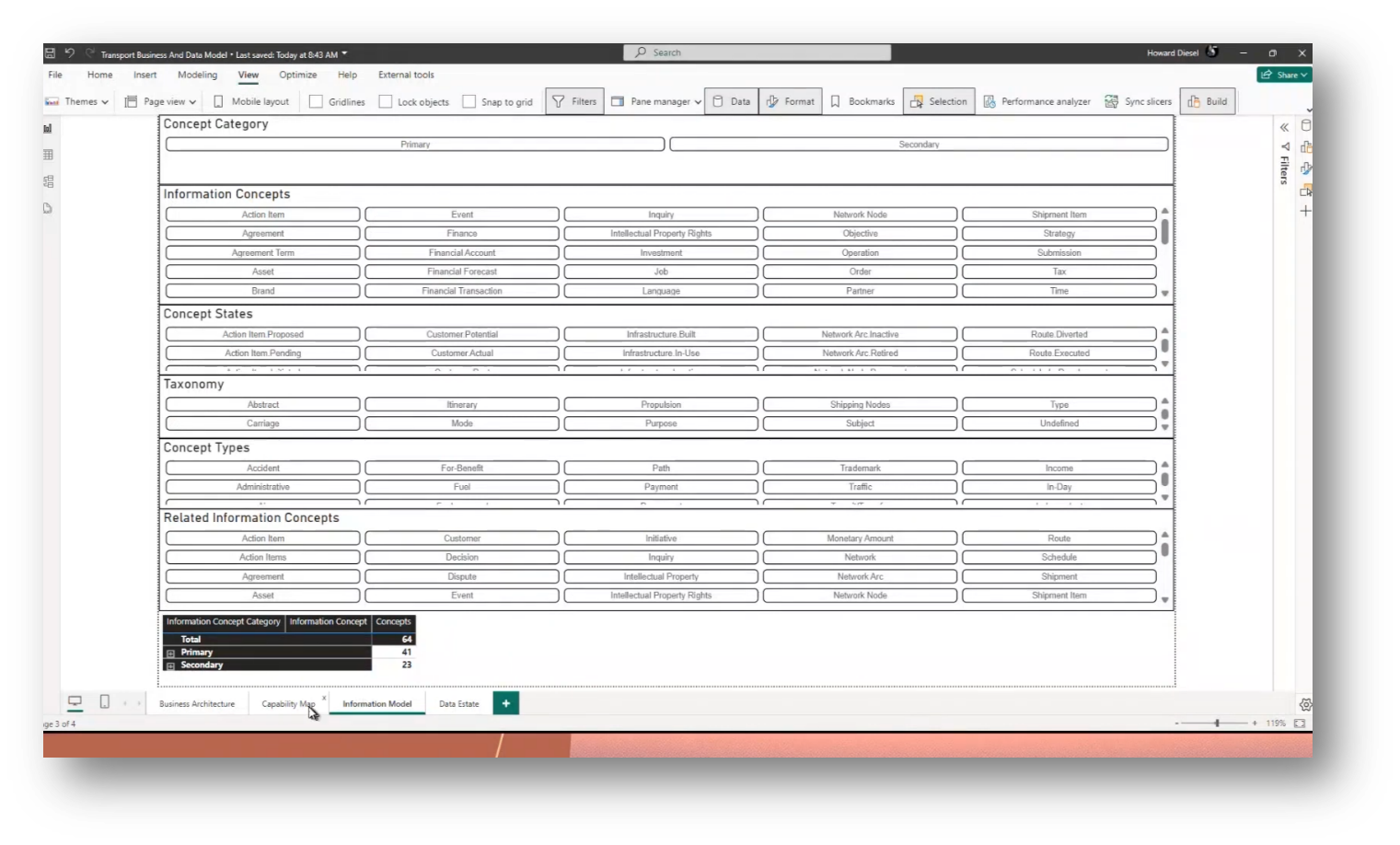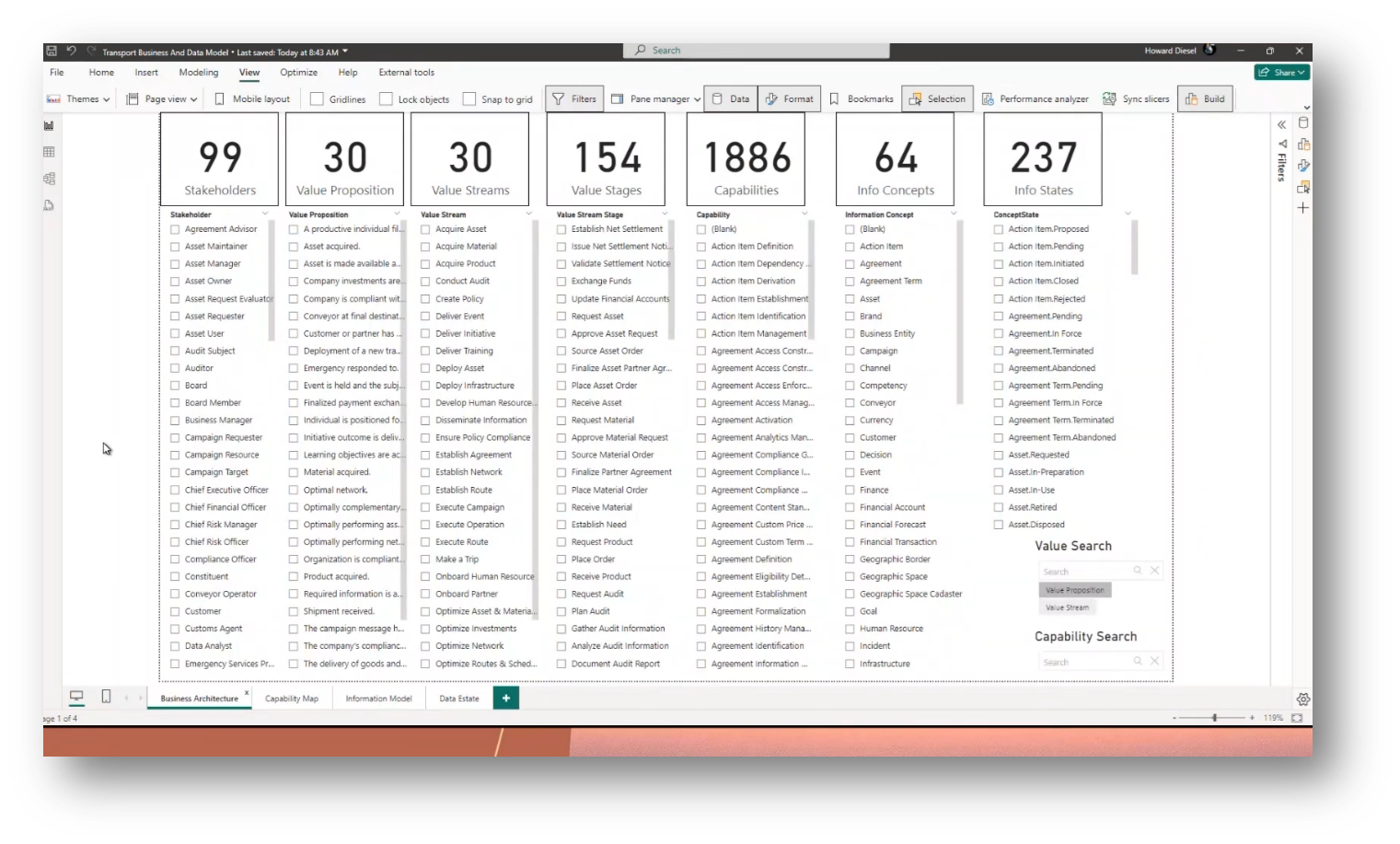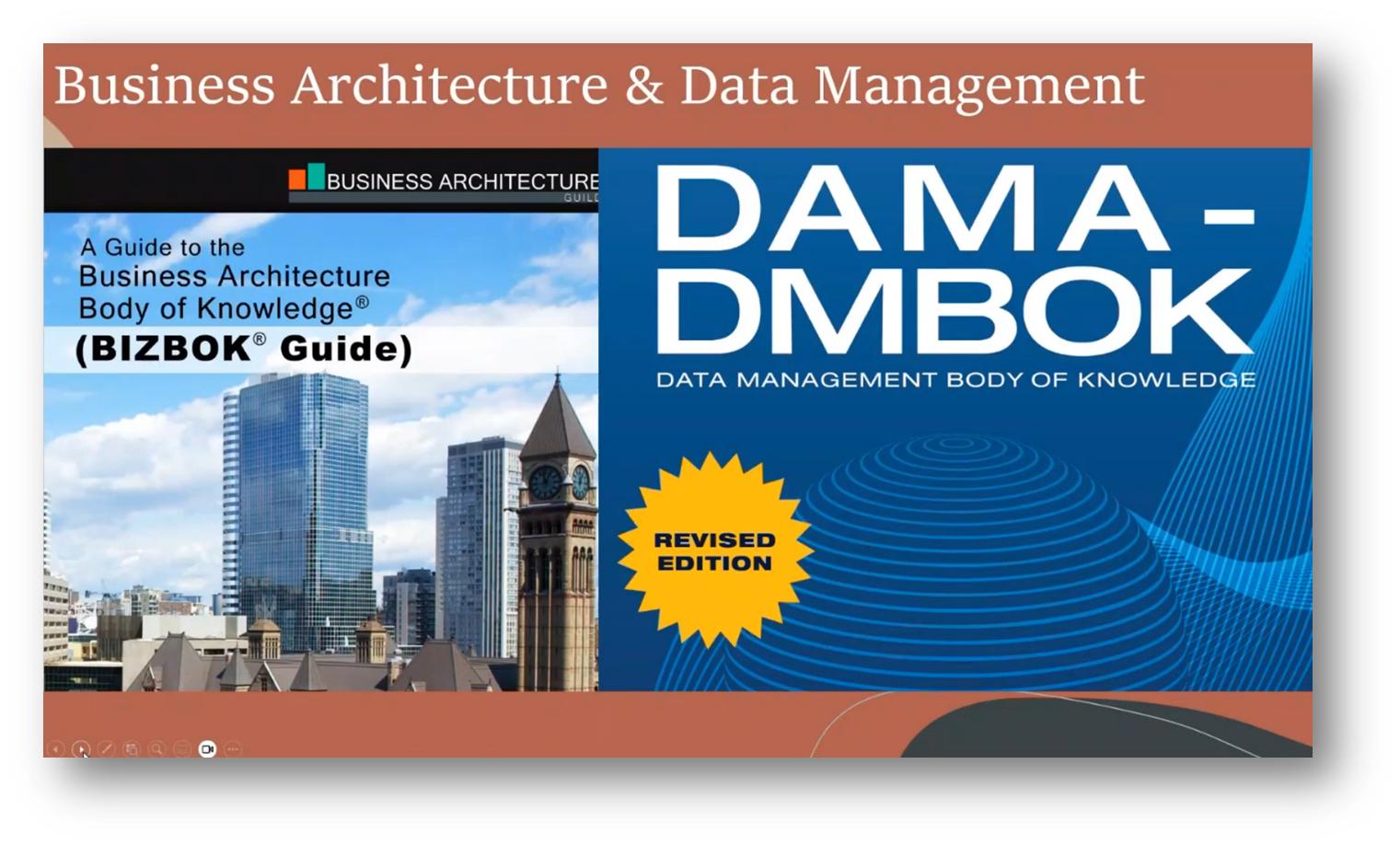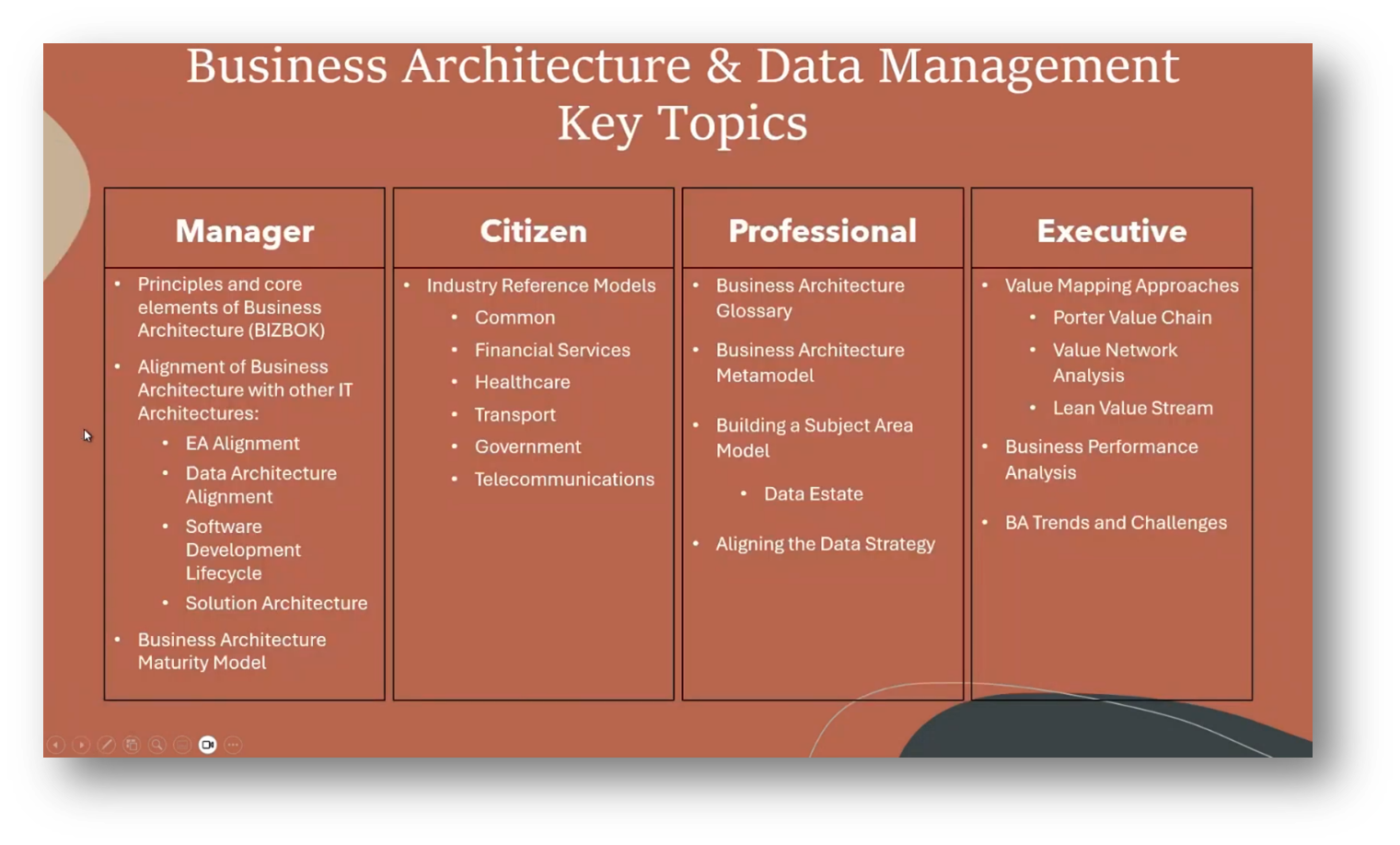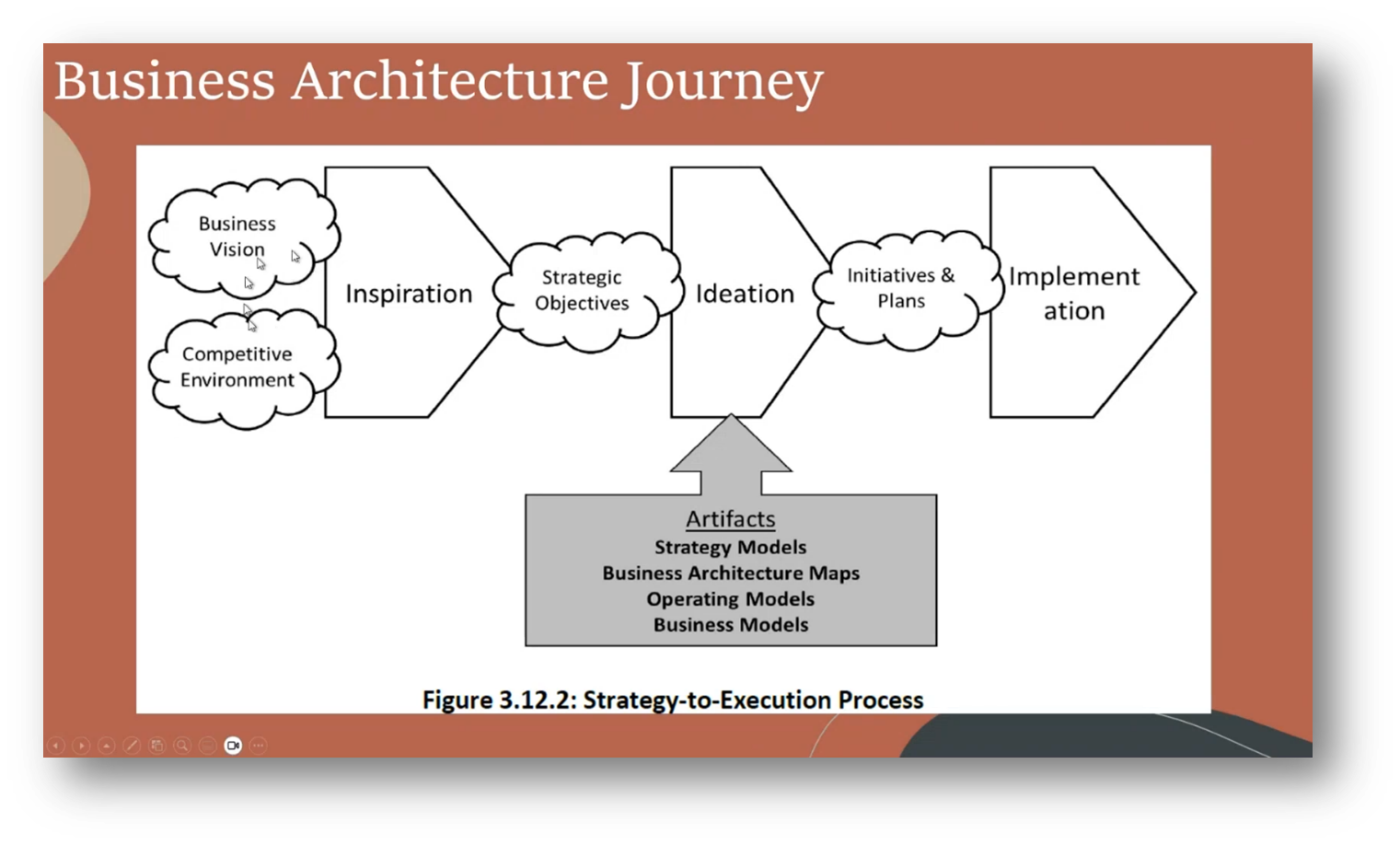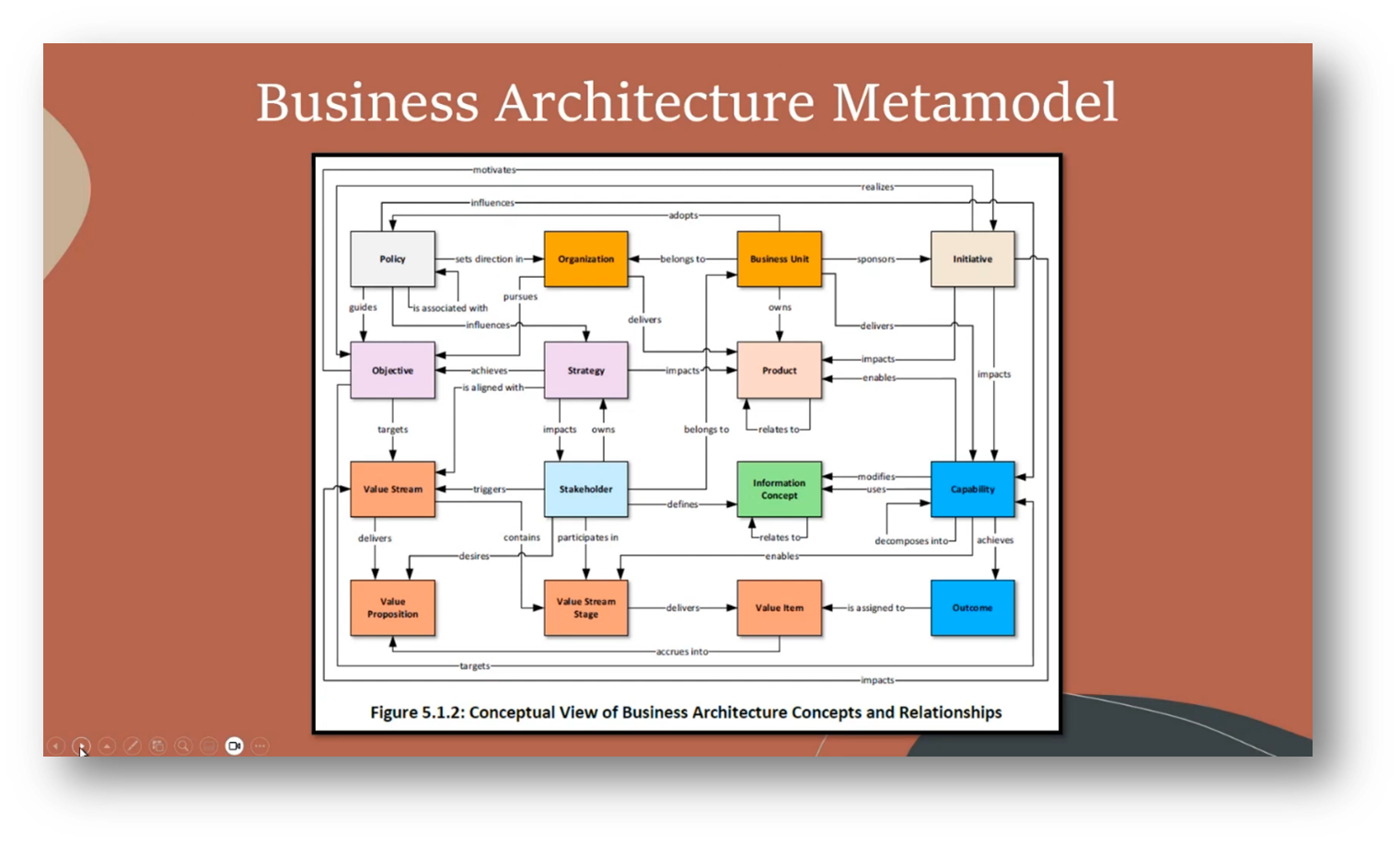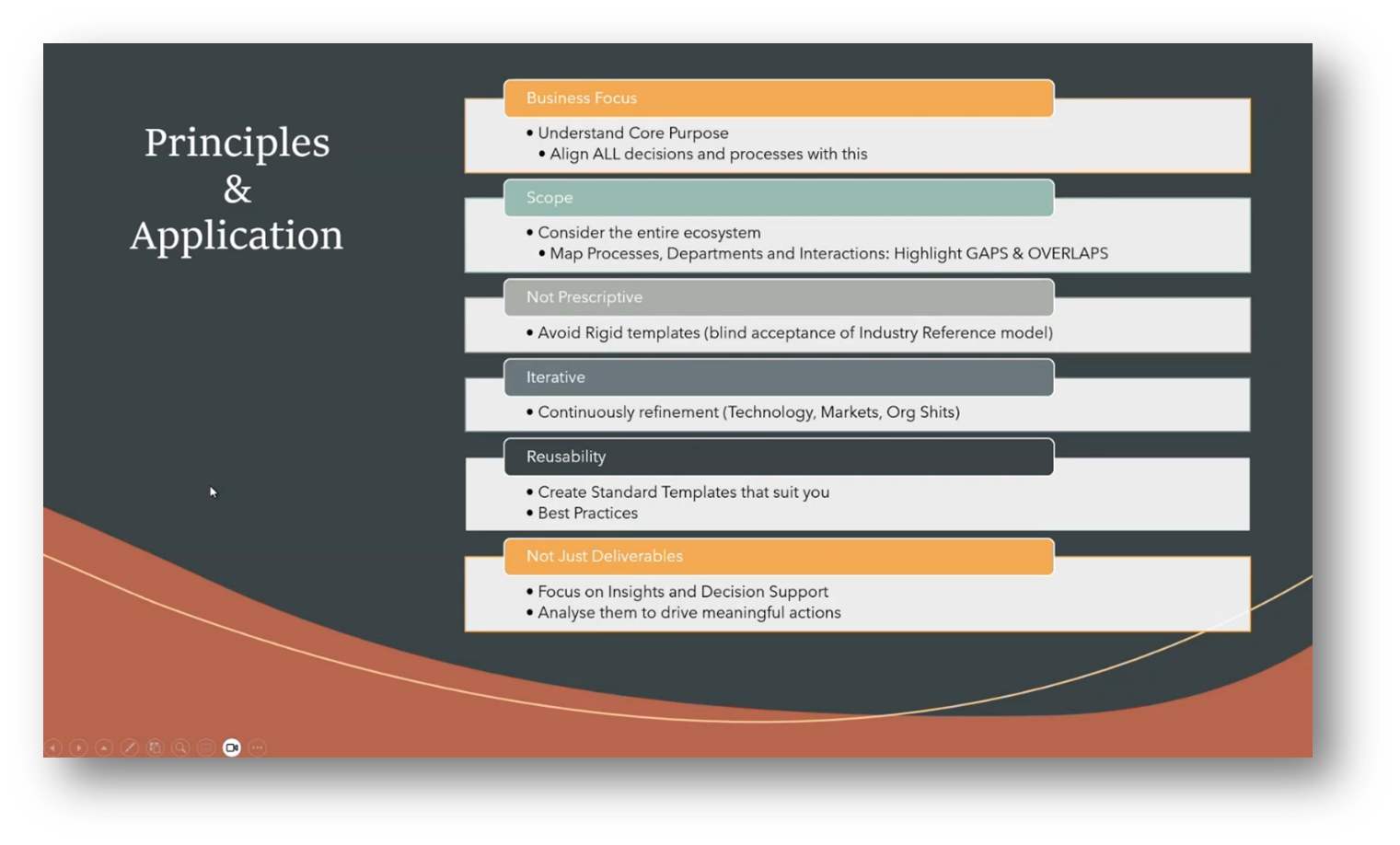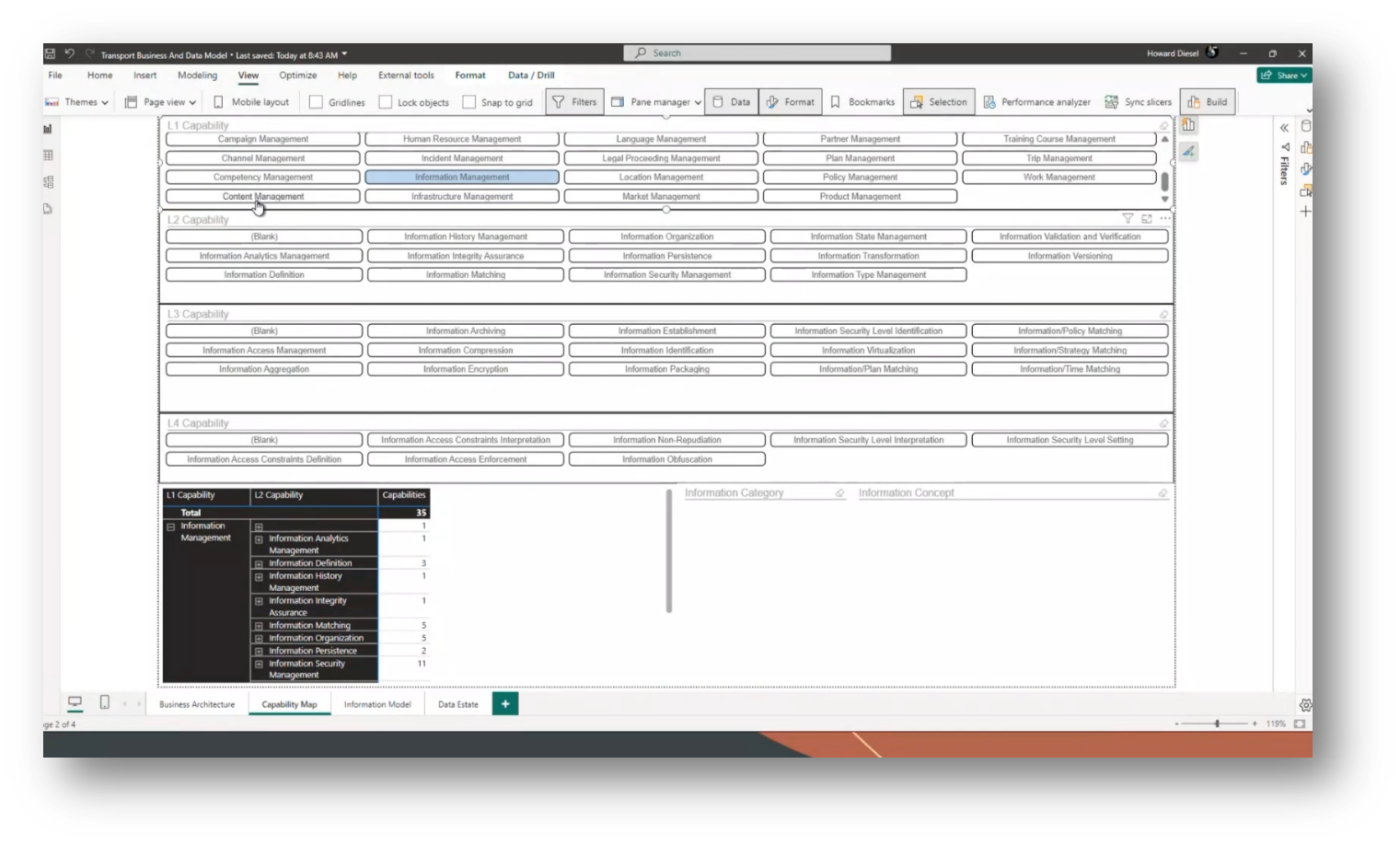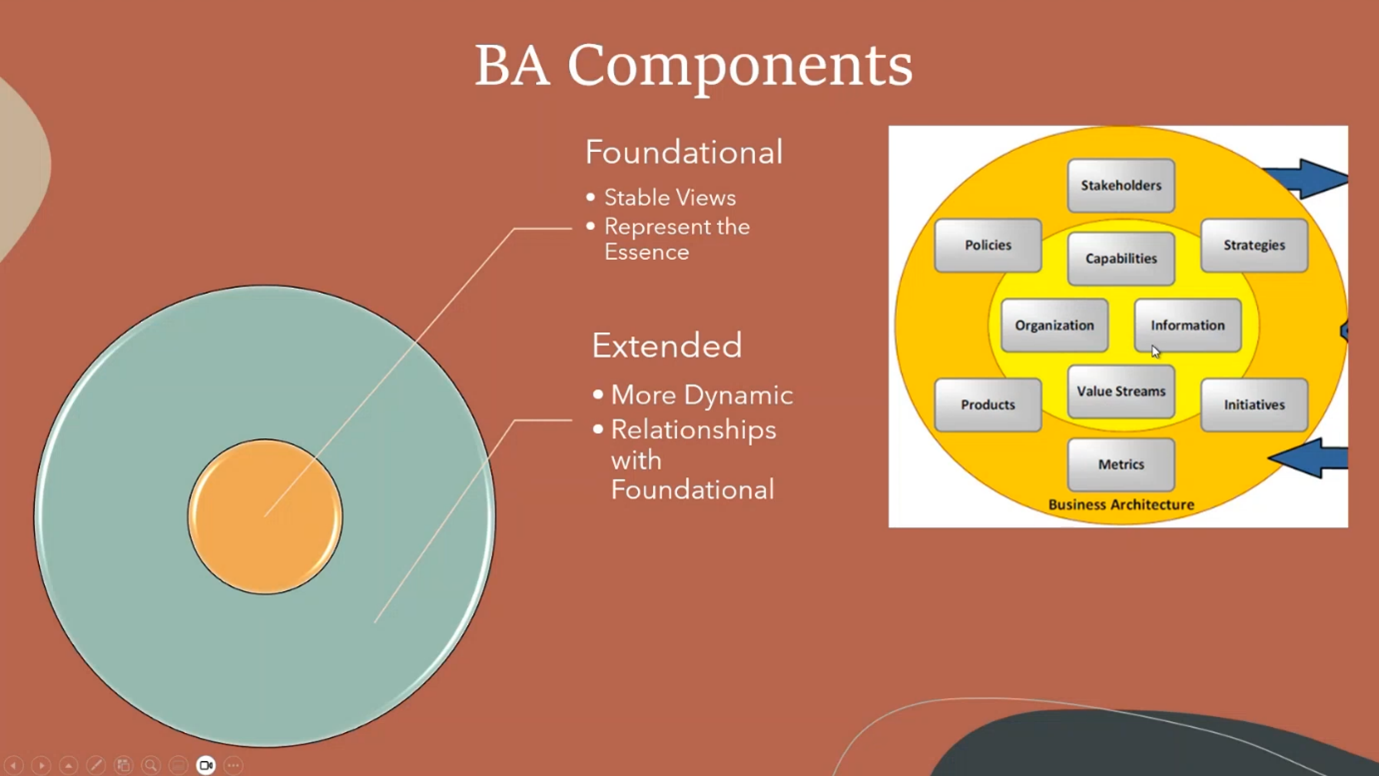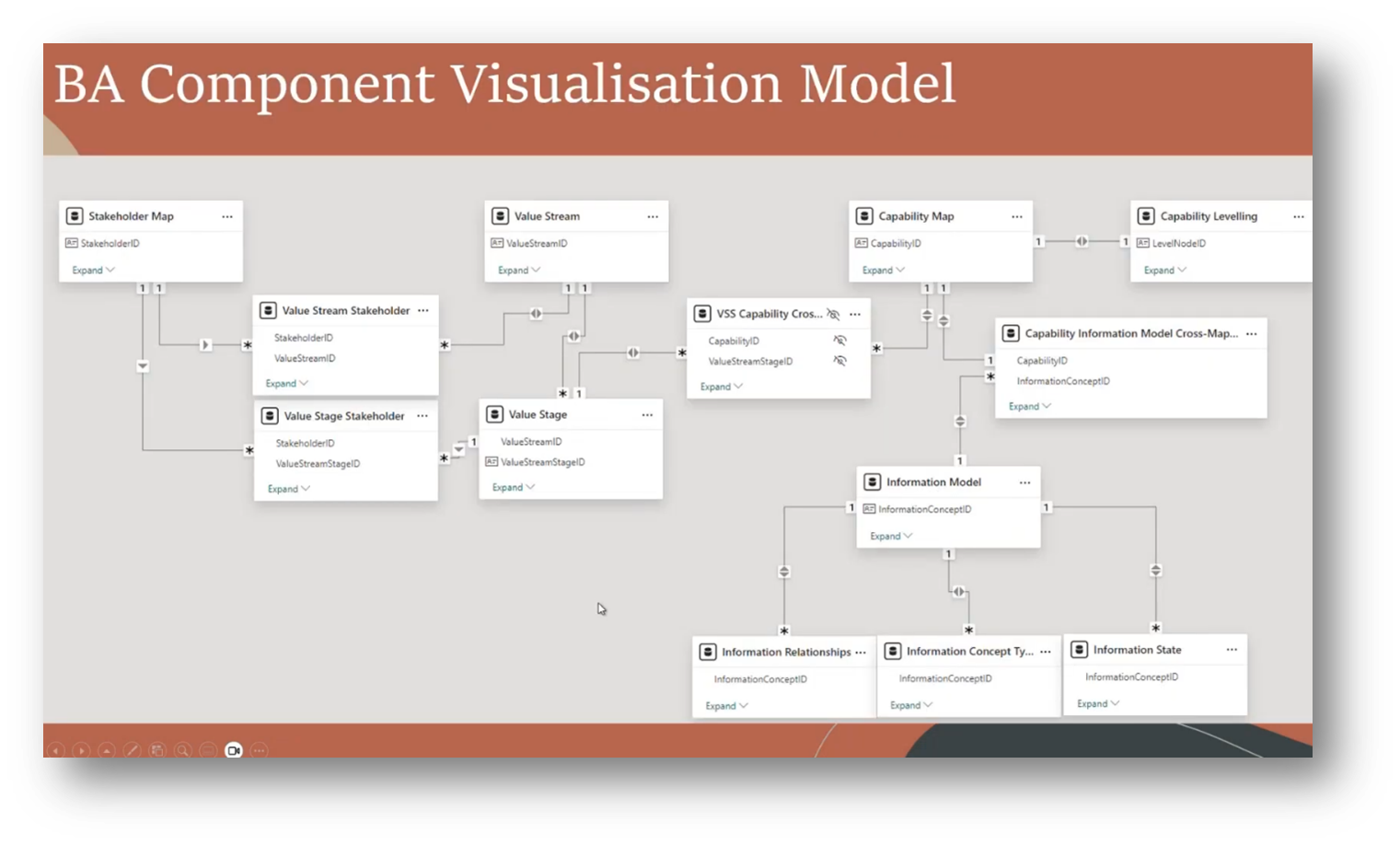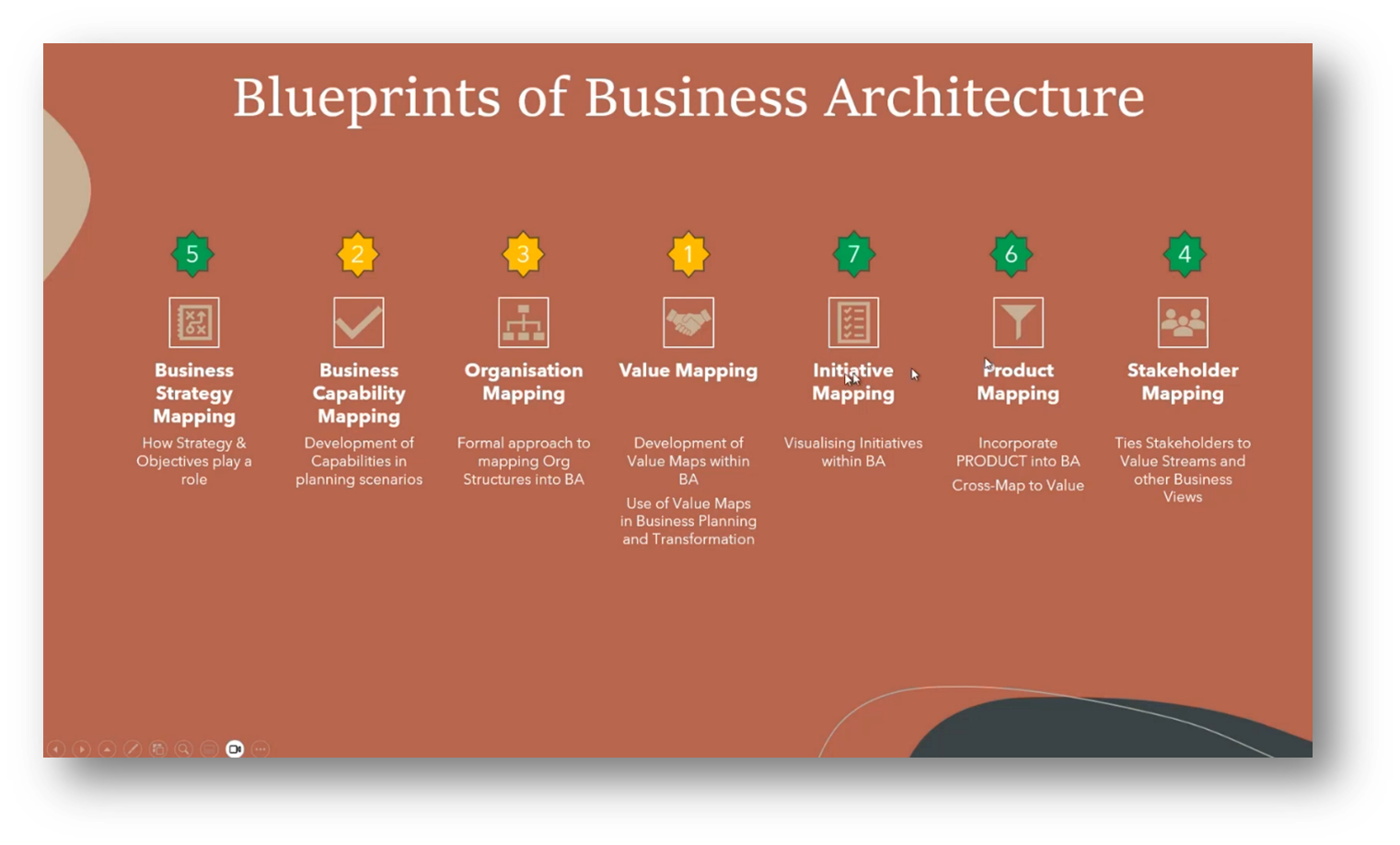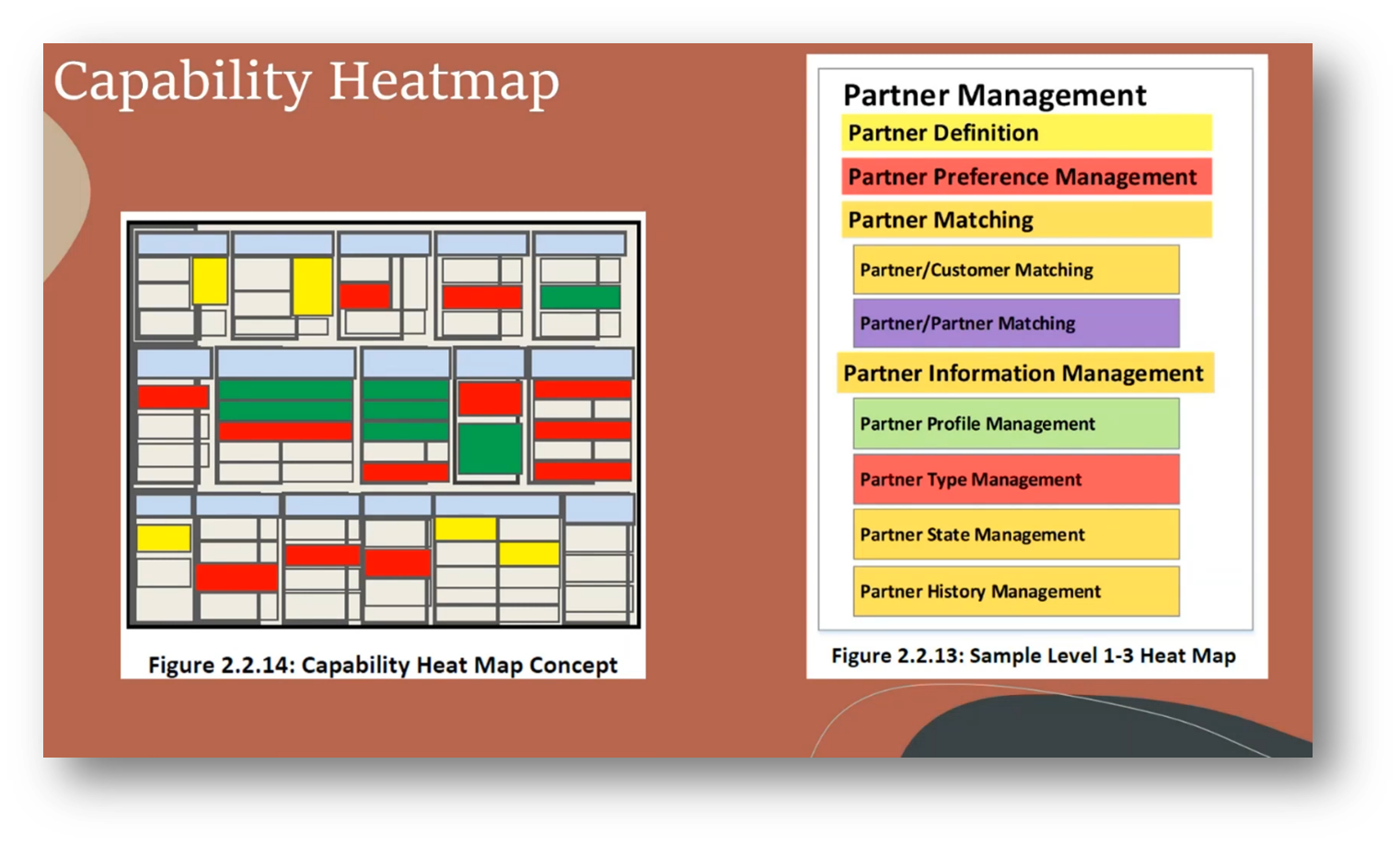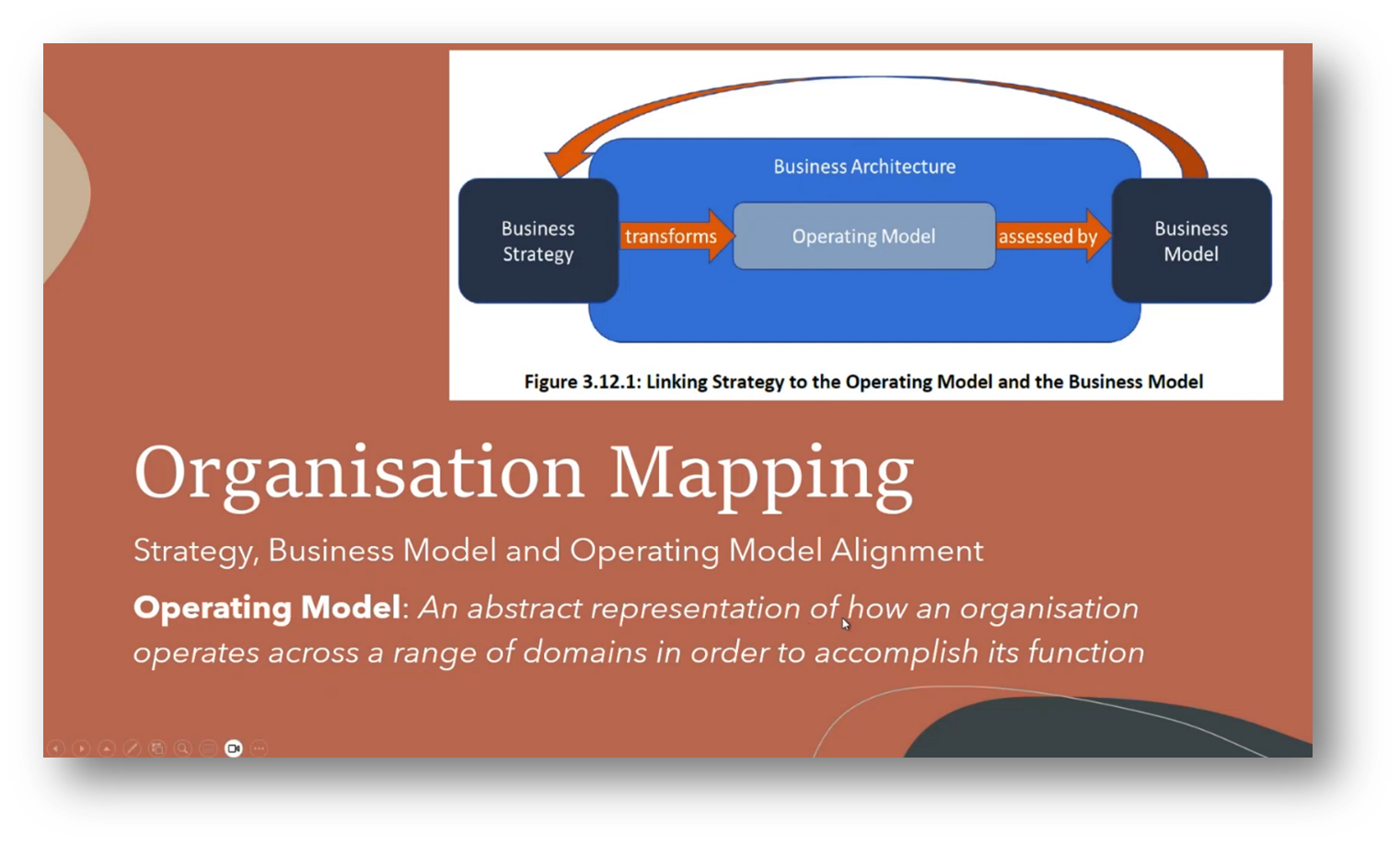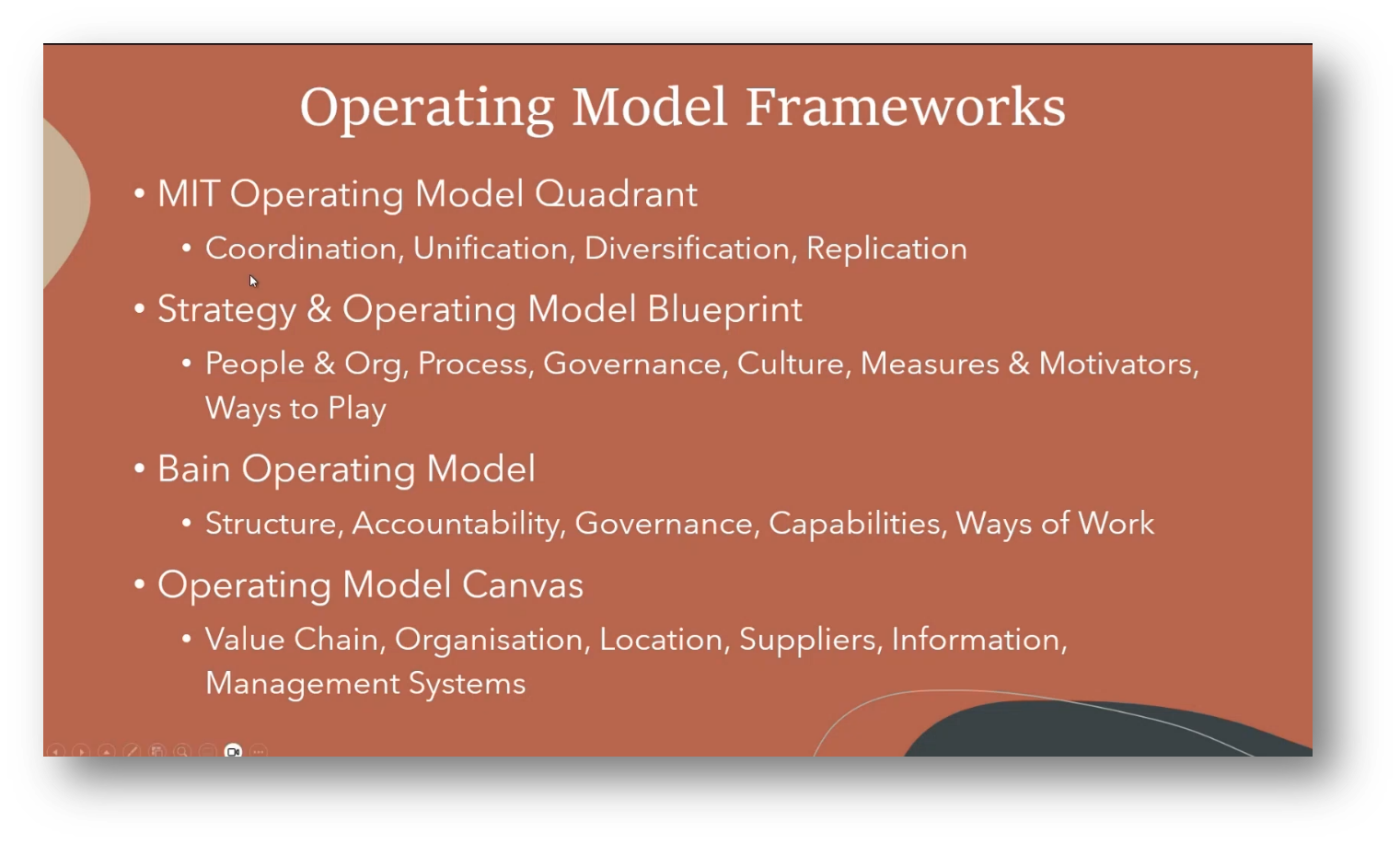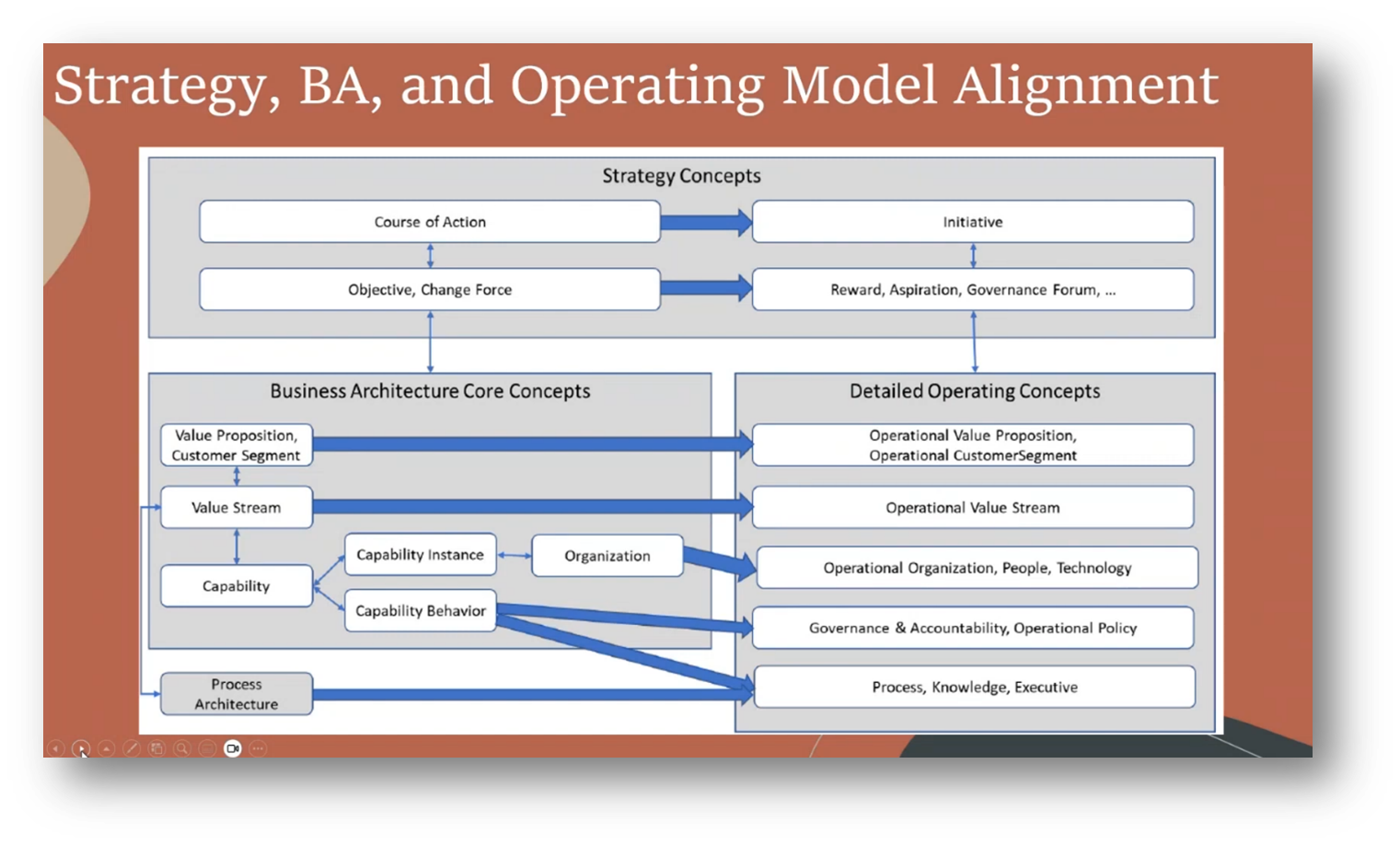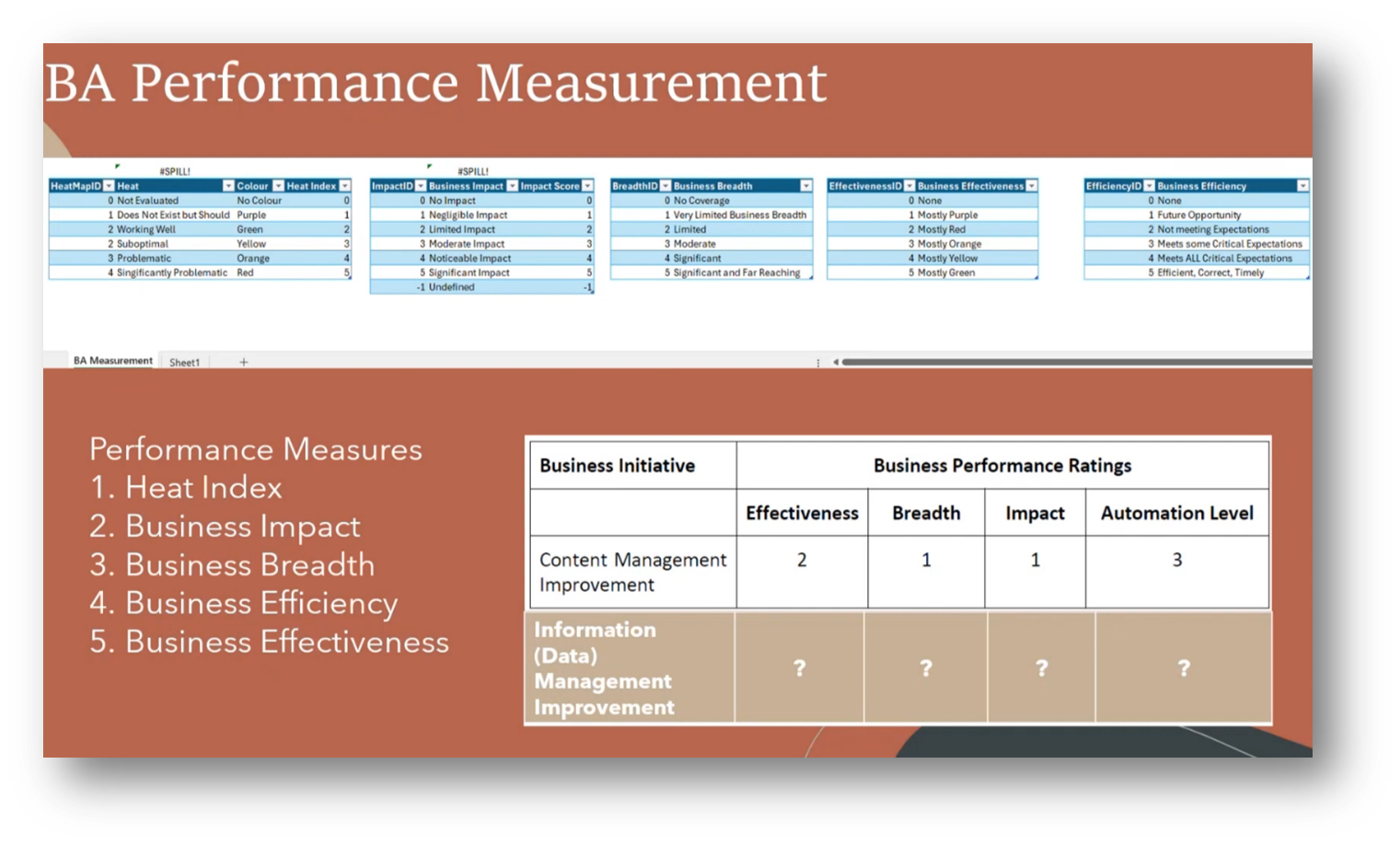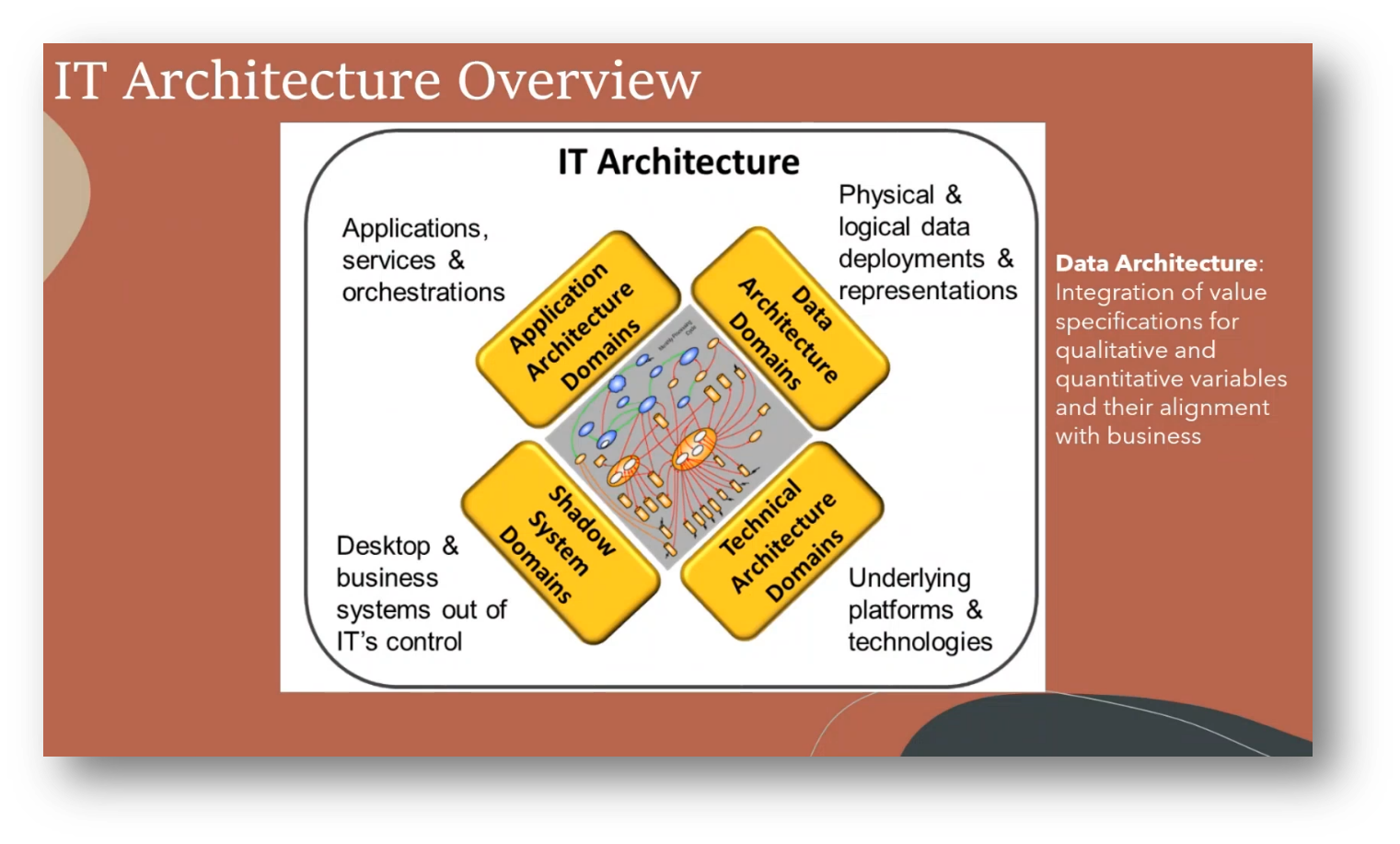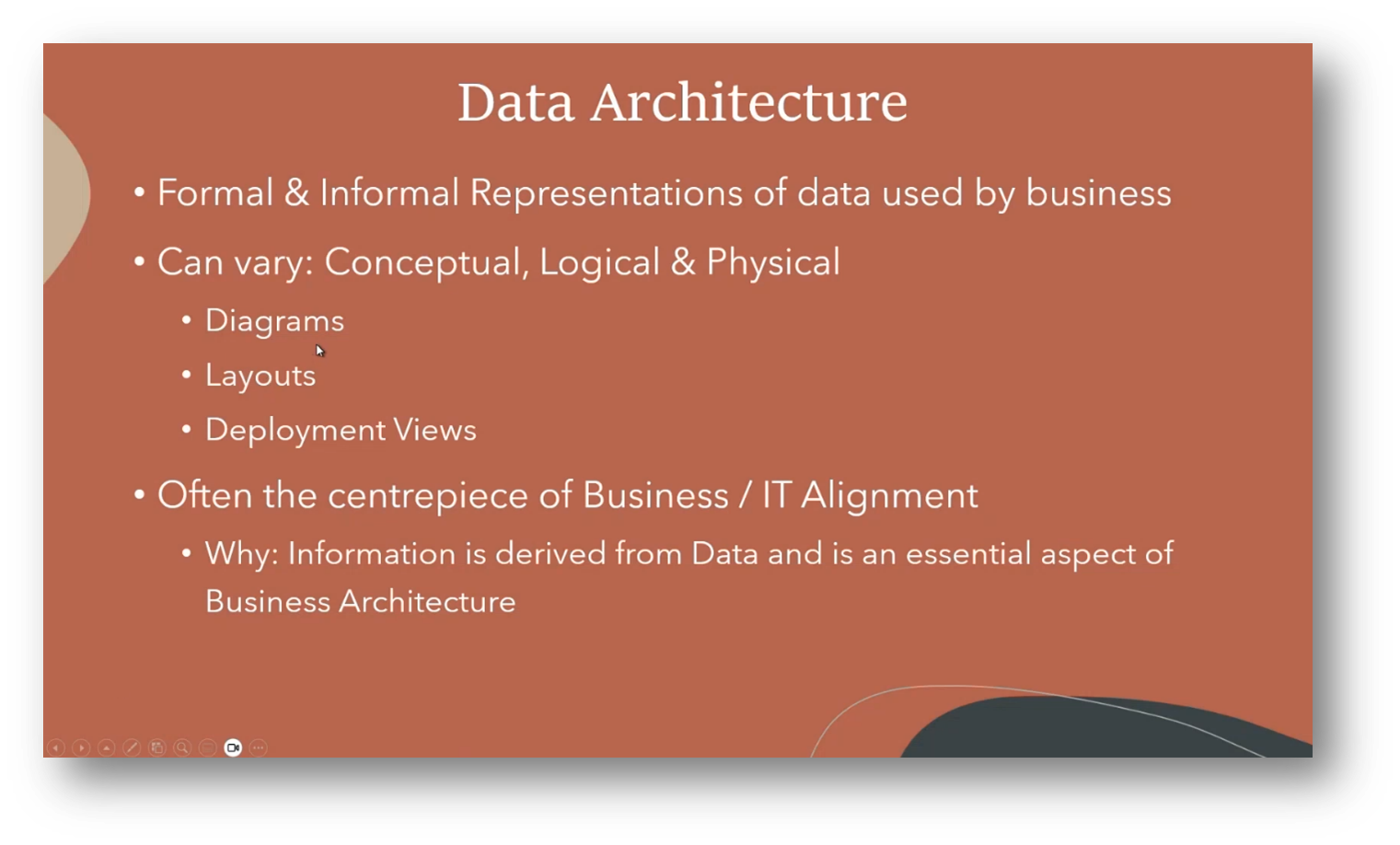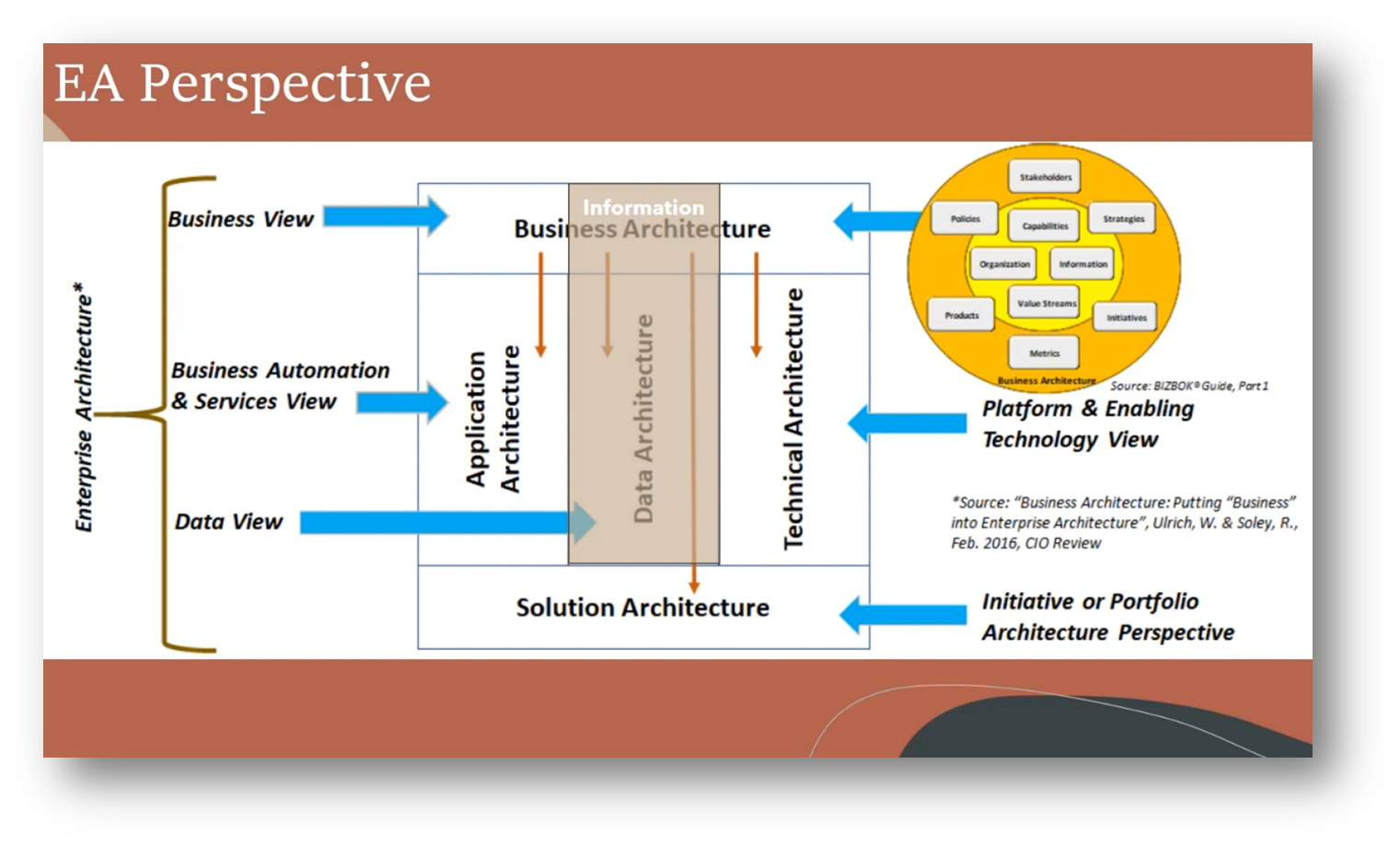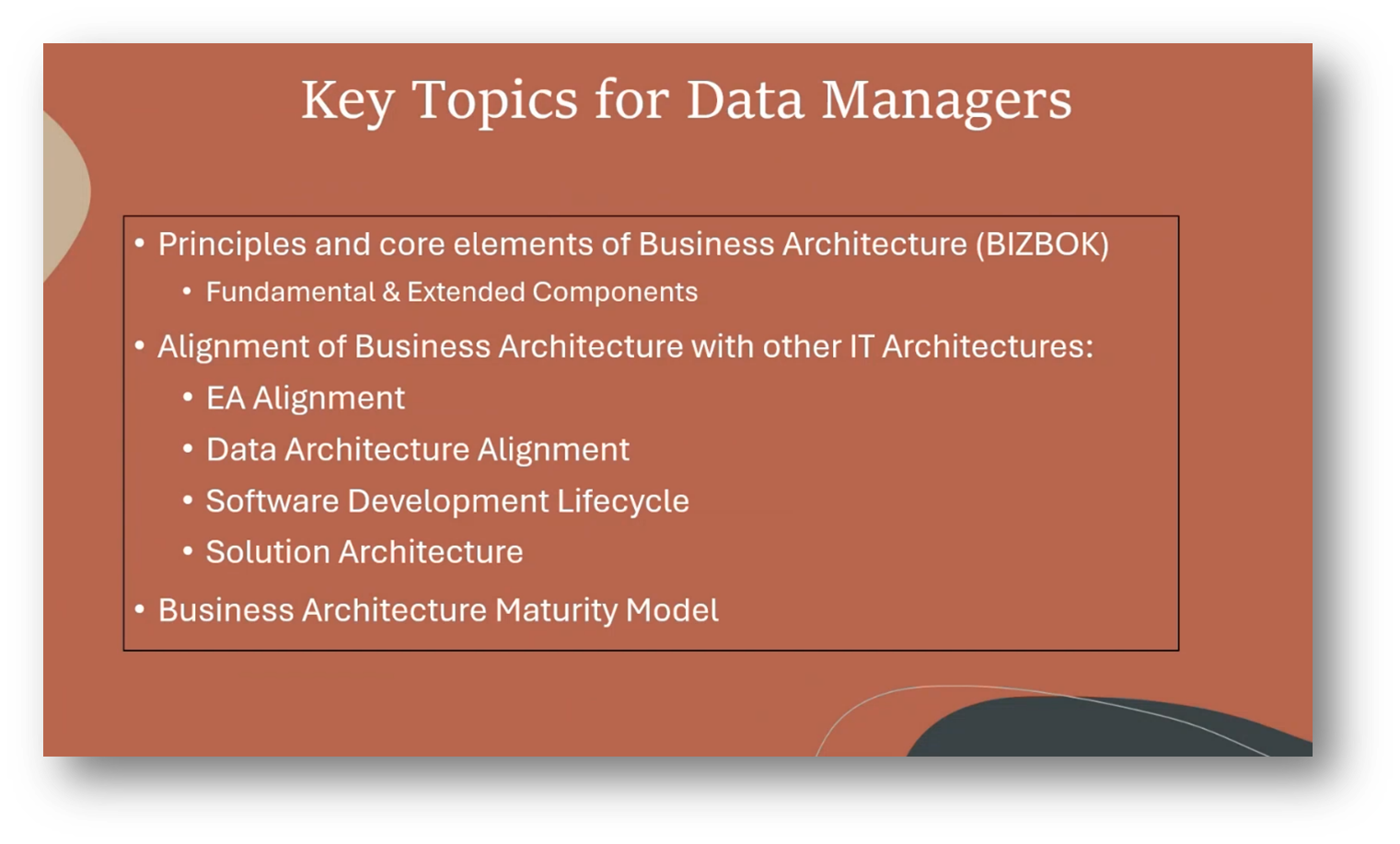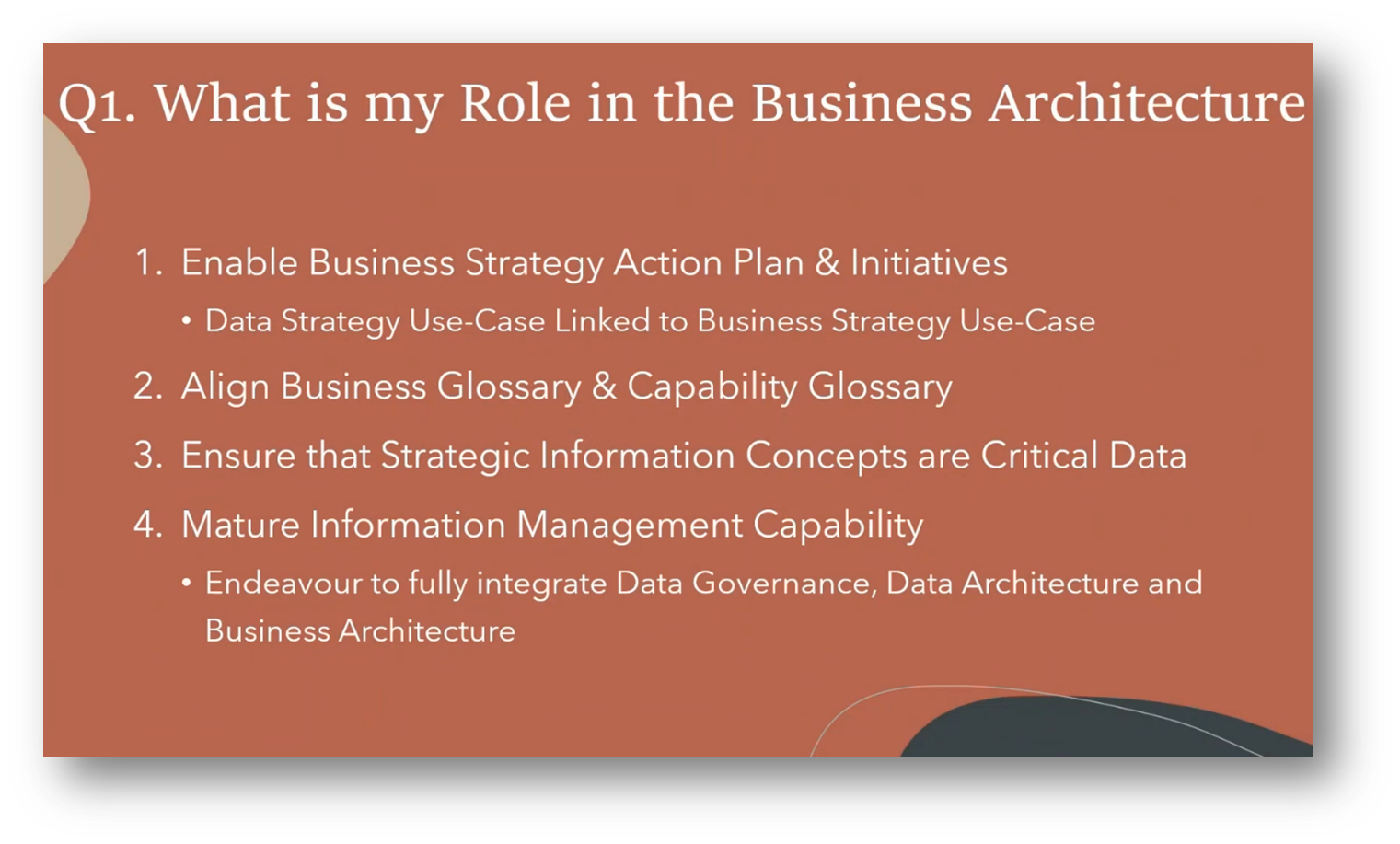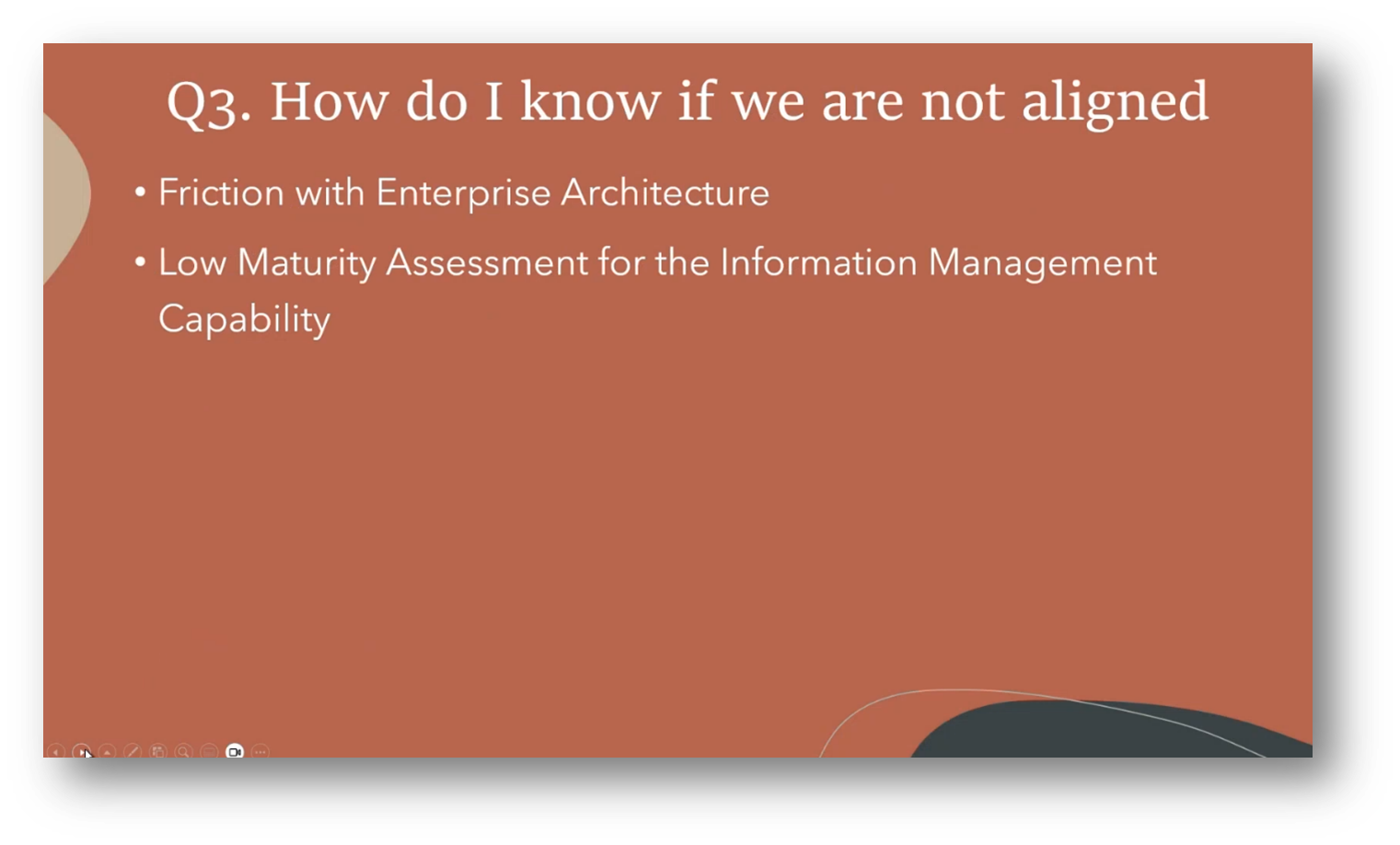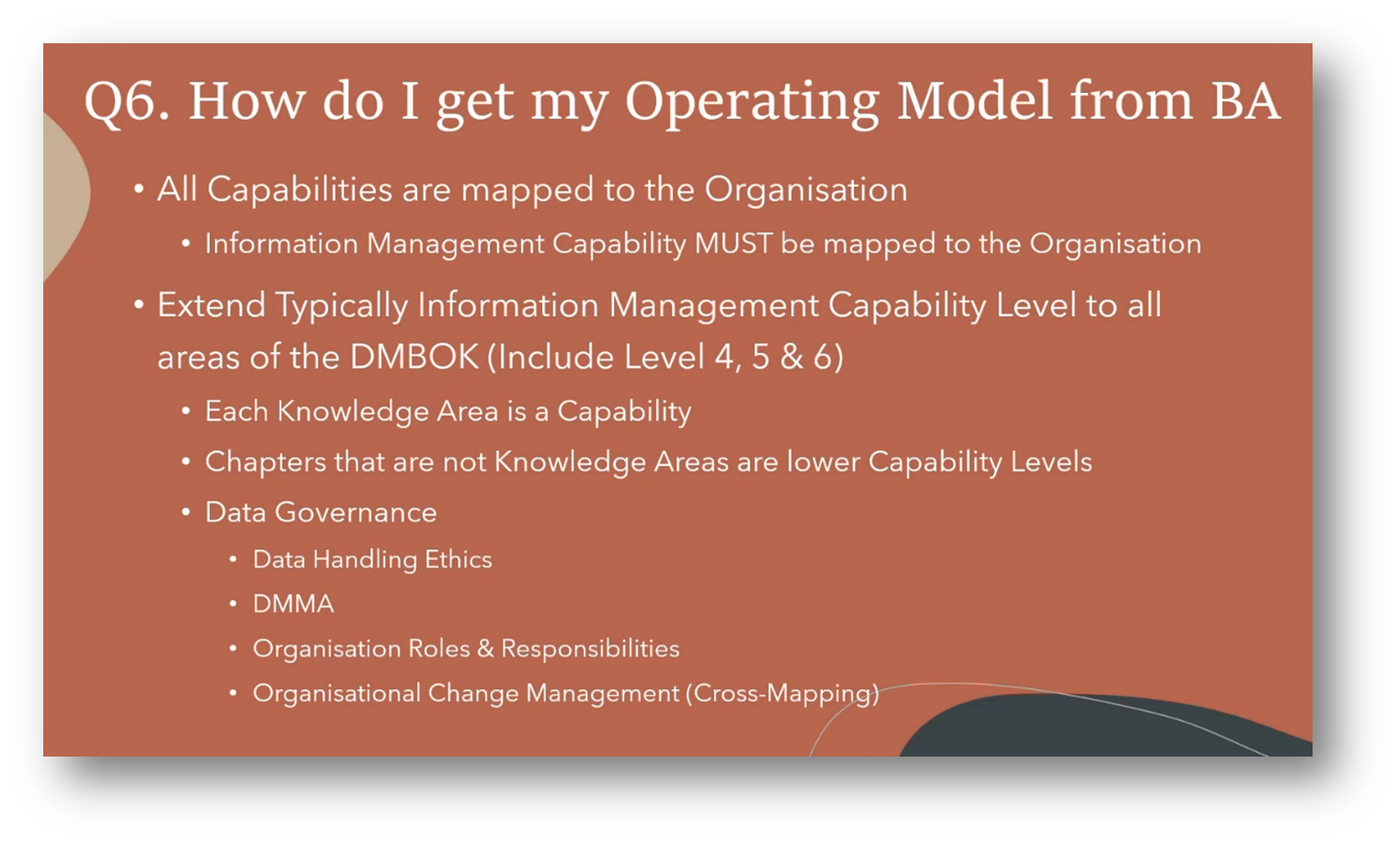Business Goals Drive Data Management for Data Managers
Executive Summary
This webinar focuses on aligning Data Management with business objectives. Howard Diesel covers the role of Data Managers in Business Architecture, the integration of Data Architecture and Business Architecture, and the relationship between Business Architecture and value streams. He also delves into business strategy frameworks, Data Management's role in Business Architecture, and the importance of information management within organisations. Additionally, the webinar touches upon operating model frameworks, the target operating model and Data Management maturity, and the intersection of Data Architecture and Business Architecture.
Webinar Details:
Title: Business Goals Drive Data Management - Managers
URL: https://www.youtube.com/watch?v=pDN-Vd5UNi0
Date: 23 May 2024
Presenter: Howard Diesel
Meetup Group: Data Managers
Write-up Author: Howard Diesel
Contents
Aligning Data Management with Business Objectives
Data Manager's Role in Business Architecture
Business Architecture and Data Governance
Business Architecture and Value Streams
Business Architecture and Data Modelling
Business Scope and Strategy
Integration of Data Architecture and Business Architecture
Business Architecture and Strategy Mapping
Business Strategy Frameworks and Implementations
Business Case and Data Architecture
Data Management and Business Architecture
Data Management and Information Management within Organizations
Business Architecture and Information Management
Operating Model Frameworks and Design
Target Operating Model and Data Management Maturity
Business and Solution Architecture
Data Manager's Role and Responsibilities
Business and Data Architecture Overview
Data Architecture and Business Architecture
Enterprise Architecture Frameworks and Business Architecture
Aligning Data Management with Business Objectives
Data Management should be closely linked to business goals, drivers, and objectives, with a clear visualisation of the data strategy helping to align it with these goals. Howard Diesel opens by stressing that starting with the Business Architecture is crucial for aligning the data strategy with the overall business strategy. He explains this by adding that data and information concepts are integral to Business Architecture.
Building a Data Management or technology strategy without a solid understanding of the Business Architecture may not align with the business strategy. To ensure an effective data strategy, it's essential to align the Business Architecture Body of Knowledge (BIZBOK) and the Data Management Body of Knowledge (DMBOK), and reference models from BIZBOK can provide valuable guidance before implementing a data strategy.
Figure 1 Business Goals Drive Data Management Webinar Cover Image
Figure 2 Information Model
Figure 3 Business Architecture
Figure 4 Business Architecture & Data Management
Data Manager's Role in Business Architecture
As a Data Manager, it is crucial to comprehend the principles and core elements of Business Architecture, manage the Data Management office, and align Business Architecture with enterprise architecture, Data Architecture, software development cycles, and solution architecture. Understanding these topics minimises friction with the Business Architecture team and ensures alignment of Data Management products and operating models with the Business Architecture.
Howard goes on to share that it is also important to align data products with business products, support the business operating model, and integrate Data Management with the business operating model. He emphasises the significance of this understanding by sharing a personal experience of facing friction and collisions with the Enterprise due to a lack of comprehension of the relationship between Data Management and Business Architecture.
Figure 5 Key Topics
Business Architecture and Data Governance
The relationship between Data Governance and Data Architecture is evolving from control and oversight to alignment, with a focus on how the Data Management steering committee approves the work of Data Architecture. The goal of Data Management should be aligned with business goals, as it is a capability within the Business Architecture.
Information management and transformation are key elements of the business capability model, demonstrating the role of Data Management within the organisation. The BISL (Business Information Services Library) framework explains Business Architecture, offering well-defined principles and definitions for use. The core elements of the Business Architecture consist of four capabilities that deliver value streams, organisational structure, and essential information for driving the business, complemented by related elements on the outside.
Figure 6 "Business Goals ARE the DM Drivers"
Figure 7 Capability Map
Figure 8 Essential Concepts Business Architecture & Data Management
Figure 9 Business Architecture & Blueprints
Business Architecture and Value Streams
The Business Architecture and value streams focus on information, capabilities, values, and organisation without including applications and technology. The alignment of the Open Group Architecture Framework (TOGAF) and Skills Framework for the Information Age (SFIA) is essential. Business Architecture components include data, motivations, organisation, stakeholders, information products and services, metrics and measures, decisions and events, and initiatives and projects. Howard notes that it consists of blueprints such as capability maps, action items, and business objects.
Value streams are crucial as they outline the production of value and the capabilities and information required. The book's structure takes you on a journey from inspiration to business vision, competitive environment, strategic objectives, and implementation actions.
Figure 10 Business Architecture Journey
Business Architecture and Data Modelling
The process involves ideation, strategy building, creating different maps, and developing action plans and initiatives that must be implemented. The meta-model focuses on data and information concepts, and the high-level data model is used to initiate the process of bringing out these information concepts. The conceptual model, value chain, and subject area model are essential for relating capabilities, stakeholders, and value streams.
Capability is a business's specific ability or capacity to achieve a value proposition intended to attract customers and generate revenue. Value stream refers to sets of elements that cater to specific stakeholders and customers. The principles of Business Architecture include a business focus.
Figure 11 Business Architecture Metamodel
Figure 12 Business Architecture Terminology
Business Scope and Strategy
In business analysis, a business's scope encompasses its entire ecosystem, including processes, departments, and units, focusing on understanding gaps and overlaps. It's essential to avoid rigid templates that don't align with a specific business's unique characteristics. The terminology used should be adaptable based on the environment, such as using "customers" or "stakeholders" as necessary.
Business Architecture involves establishing a strategy, understanding its impact, building a solution, establishing initiatives and plans, and deploying solutions. Data Management or strategy use cases should align with business objectives and contribute to feasibility studies. The data strategy architecture is part of the business-driven architecture, involving the definition and relationship of IT architecture and data products.
Figure 13 Principles & Application
Figure 14 Business Architecture Framework (Playbook)
Integration of Data Architecture and Business Architecture
The concept of Information Architecture encompasses Content Management and Information Management, covering both structured and unstructured information. In contrast, Data Architecture is primarily concerned with the physical aspects. The convergence of Business Architecture and IT architecture will be explored further, with Business Architecture comprising foundational components, capabilities, organisation, information, and value. Challenges surface when aligning various Business Architecture and data estate models, requiring examples of subject area model mapping and capability maps across different industries.
Figure 15 Capability Map
Figure 16 BA Components
Business Architecture and Strategy Mapping
The areas of Business Architecture can be categorised into internal and extended, with extended areas being more dynamic and subject to change. Data Management should be connected to an organisation's foundational, unchanging areas, such as capabilities and organisations. An effective visualisation tool, like PowerBI, can aid in understanding and filtering the complex relationships between different areas. Business Architecture involves continual mapping between components such as strategy, capabilities, organisations, products, and initiatives.
The high-level flow of elements in Business Architecture starts with value mapping, determining needed capabilities, organisational structures, stakeholders, business strategy, products, and initiatives. The business strategy integrates goals and value propositions with action sequences, creating a cohesive whole. The execution of the strategy is carried out through initiatives, and the balanced scorecard is used to monitor and measure these initiatives.
Figure 17 BA Component Visualisation Model
Figure 18 Blueprints of Business Architecture
Figure 19 Business Strategy Mapping
Business Strategy Frameworks and Implementations
Business strategy frameworks such as the Porter Five Forces Model, Balanced Scorecard, Norton Kaplan Strategy Map, competitive analysis, and SWOT Matrix are essential for understanding strengths and weaknesses, particularly in data. To effectively utilise these frameworks, a comprehensive Excel spreadsheet can map and analyse goals, objectives, initiatives, and performance indicators. Howard notes that the business scorecard typically covers financial, customer, internal, and growth perspectives, with specific objectives like increasing profits and revenue and reducing the total cost of ownership.
Data professionals should align their initiatives with these objectives to demonstrate their contributions to the Business Architecture. It's crucial to map strategic objectives and related initiatives in a way that allows for measurement and aggregation to show their impact on different levels of the business in terms of revenue and outcomes. Additionally, a value stream and business capability map can be employed to achieve specific objectives, such as disposal profit, by mapping related capabilities and outcomes to the overall strategy.
Figure 20 Principles of Strategy Mapping
Figure 21 Strategy Frameworks
Figure 22 Objective Mapping - Distilling Strategy
Business Case and Data Architecture
Howard’s key points revolve around the need to establish metrics, business dashboards, and business warehouses to create a data mart focused on the process of vehicle asset disposal and its effectiveness. Enhancing customer value and having a unified view of the customer within the organisation is stressed. Emphasising the significance of Data and Master Data Management, Howard advocates for aligning with the business case to garner stakeholder involvement.
Additionally, Howard proposes ideation sessions with the business to explore avenues for increasing customer value and highlights the importance of impact analysis, value stream, capability, and initiatives. The ultimate goal is to identify the customer at every interaction point, with master data serving as a critical factor in achieving this goal. The discussion also covers the financial evaluation of data initiatives and their contribution to profitability while suggesting integrating Business Architecture into Data Architecture, governance, and strategy.
Figure 23 Relationship to Value Stream
Figure 24 Strategy Mapping Example
Figure 25 Strategy Impact Analysis
Data Management and Business Architecture
Business Architecture focuses on establishing a Master Data System while keeping business operations running smoothly. The value of the data product will be determined using data return on investment (ROI) and data office ROI valuation techniques, for which webinars are available. It's emphasised that achieving customer recognition is crucial for maintaining the value of data.
The webinar series covers aligning Business Architecture with Data Architecture and the importance of providing data ROI. Resistance to implementing Data Governance may arise from Enterprise architecture and Business Architecture. The session aims to guide Data Managers in involving themselves in Business Architecture and taking ownership of the information model while also addressing concerns about the availability of information for Data Managers.
Data Management and Information Management within Organisations
The absence of an Enterprise Data Model within a well-established Enterprise Architecture has led to complexities and misunderstandings in dealing with business and Data Architecture. Information storage is typically kept at high organisational levels, making alignment with the organisation's strategy and goals challenging.
Information management is integral to every capability within the organisation and is essential in delivering these capabilities. Implementing common vocabulary and unification is necessary to minimise overlaps and gaps in multiple business units for a unified capability instance. In contrast, the capability required to deliver on the value stream depends on implementing these capabilities within the business units. It requires information to drive itself and strategy and policies to support it.
Figure 26 Business Capability
Business Architecture and Information Management
Business Architecture and Information Management are closely connected, sharing the same stakeholders and requiring collaboration. Information and data form the core of Business Architecture, and capabilities offer benefits such as common vocabularies and a focus on identifying business processes.
Transformational design is integral to the business strategy for organisational transformation, and setting up capabilities involves focusing on the "what" rather than the "how." Capabilities are unique, stable, and composite, with information management being a crucial supporting capability. Using a heat map helps identify areas where the business is facing challenges.
Figure 27 Capability Guidelines Summary
Figure 28 Defining a Capability
Figure 29 Stratified, Level 1 Capability Map Example
Figure 30 Capability Heatmap
Operating Model Frameworks and Design
Howard provides an overview of organisational mapping, business strategy, and operating models. The importance of aligning the data strategy with the operating and business models is emphasised. Additionally, Howard discusses different frameworks for building operating models and highlights the need to understand and align the business operating model before designing the data operating model.
Designing an operating model involves mapping architecture concepts into business operating standards and procedures, including value propositions, customer segments, value streams, organisation, technology, governance, and operating policies and processes. Howard distinguishes between the current state (as-is) and the designed operating model.
Figure 31 Organisation Mapping
Figure 32 Operational Model Frameworks
Figure 33 Strategy, BA, and Operating Model Alignment
Target Operating Model and Data Management Maturity
The objective is to develop a Target operating model to enhance collaboration, governance, and alignment across business units. The maturity model consists of five levels, similar to the Data Management model, and requires a careful definition of categories. Howard stresses the practice of assessing the value of different maturity levels, as an increase in maturity may not always directly correlate with increased value.
Establishing a path towards a midpoint where practices are repeatable, sustainable, and scalable and provide business value is important. Balancing compliance and governance is essential, as excessive compliance or value without governance can lead to challenges. The focus is on achieving strategic information, business process information, and system integration to elevate Data Business Architecture maturity. Linking business performance ratings and structured and unstructured Data Management to each initiative's performance ratings is also vital.
Figure 34 Asis Operating Model
Figure 35 BAMM Scope
Figure 36 BA Value & BA Maturity Relationship
Figure 37 BA Maturity & Data Management
Figure 38 BA Performance Measurement
Business and Solution Architecture
In Business Architecture, various domains such as application, data/information, technical, and shadow systems play crucial roles. Howard notes that Solution Architecture integrates these domains to deliver a comprehensive solution, while Data Architecture, a part of IT architecture, focuses on producing and managing information. Application systems aim to automate business capabilities and enhance efficiency, while legacy applications should be reusable and adaptable. Additionally, Enterprise Architecture encompasses Business, Application, Data, and Technology Architecture, with Solution Architecture serving as the integrator. Information Architecture is emphasised as a core element of Business Architecture, and both Business and Solution Architecture adhere to principles of alignment and core components.
Figure 39 IT Architecture Overview
Figure 40 Application Architecture
Figure 41 Data Architecture
Figure 42 Technical Architecture
Figure 43 EA Perspective
Figure 44 Key Topics for Data Managers
Data Manager's Role and Responsibilities
Data Managers are crucial in aligning data strategy with business strategy, improving information management, and optimising all information capabilities. This involves aligning data models with Business Architecture, measuring performance in line with business goals, and integrating data products with the business products. Addressing any areas of friction and low maturity in information management capability is important to avoid potential trouble.
Figure 45 "What is my Role in the Business Architecture?"
Figure 46 "How do I know if we are not aligned?"
Figure 47 "How do I integrate Data Products?"
Figure 48 "How do I get my Operating Model from BA?"
Business and Data Architecture Overview
Howard covers extending the Data Management and Analytics Reference (DMAR) to levels five and six in each knowledge area, with chapters within knowledge areas representing lower capabilities. Data governance encompasses data handling ethics, DMAA, organisational roles, and organisational change, with level four as data governance and levels five and six representing lower capabilities.
Supporting Business Architecture involves answering previous questions to ensure proper support. Howard intends to repeat the process in the webinars for data citizens, professionals, and data executives, including industry reference models and principles. Data Architecture and Business Architecture are interconnected, with a summarised version of Business Architecture included in Data Architecture planning.
Data Architecture and Business Architecture
Understanding Data Architecture is crucial for developing effective data strategies and governance. This involves considering capabilities, Business Architecture, information models, and improvement methods. Organisations' responsibility for driving Business Architecture usually falls under the Enterprise architecture department, which covers business, data, application, and technology architecture.
In cases where Business Architecture capability is lacking, Howard recommends reviewing industry reference models and utilising a starter model like the insurance industry data model. Established enterprises typically categorise Business Architecture under Enterprise architecture, aligning with the core element in the Open Group Architecture Framework (TOGAF). Fundamental guidance on Data Architecture principles is available for those looking to comprehend and implement them.
Enterprise Architecture Frameworks and Business Architecture
TOGAF is commonly used in Enterprise architecture departments, but it can be difficult to understand and requires thorough training. Howard notes that it focuses on processes and procedures, sometimes lacking an understanding of the "why." The Business Architecture Guild offers material and certification for Business Architecture, and certification for TOGAF is challenging, requiring a deep understanding of the framework. Studying the body of knowledge helps to understand Business Architecture at a high level.
If you would like to join the discussion, please visit our community platform, the Data Professional Expedition.
Additionally, if you would like to be a guest speaker on a future webinar, kindly contact Debbie (social@modelwaresystems.com)
Don’t forget to join our exciting LinkedIn and Meetup data communities not to miss out!


